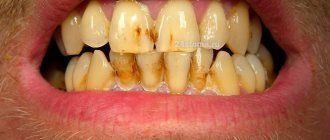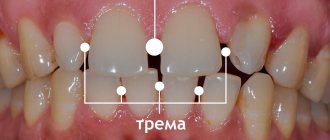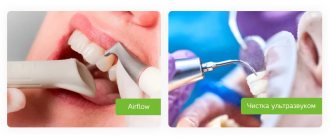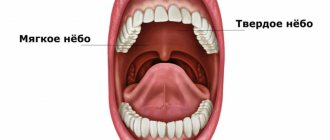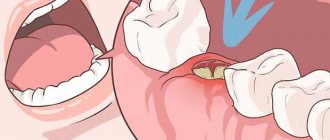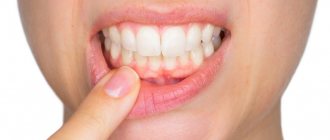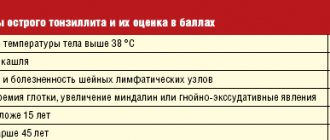Green poop in a baby can be the result of various reasons, including those that do not harm his health. However, when green stool appears, it is important to pay attention to factors such as stool consistency, frequency of bowel movements, odor, and the presence of impurities.
If you have any doubts about the child’s well-being, you should urgently seek advice from a specialist, since this symptom may also mean the presence of pathology in the child’s body.
What kind of stool should a baby have?
The baby's stool should be yellow.
The norm is that the baby's stool is yellow in color, has a mushy consistency and a sour odor.
This usually happens in children who are bottle-fed and who regularly receive food of a stable composition.
A breastfed baby's stool may vary in color, smell, and consistency. The reason for this is the composition of breast milk, which can change under the influence of many factors:
- mother's diet;
- her psycho-emotional state
- lactation period
The baby's first stool after birth is black with greenish streaks, it is very thick and tight. This stool (meconium) is normal and should not be a cause for concern.
These are epithelial cells, mucus and amniotic fluid accumulated in the intestines of a newborn. With proper development and breastfeeding of the baby, after a few days the stool becomes liquid and turns green.
During the first two months of life, the baby can have bowel movements from three to twelve times a day, ideally after each feeding. Also, stool during this period can be an indicator of proper lactation. If the baby has not had a bowel movement for 24 hours, this may indicate that he is not receiving enough milk.
Does a mother's constipation affect her breastfeeding baby?
Errors in the nutrition of a nursing woman can affect the baby’s digestion. To relieve a baby from constipation, his mother will have to reconsider her menu. What dietary disorders can cause constipation?
- lack of water: if the mother drinks little, then where does the body get liquid to produce milk?
- excess foods with a fixing effect: rice, pasta, pastries, white bread, strong tea and coffee;
- lots of milk and dairy products. Constipation may result from intolerance or allergy to cow's milk protein, the most common type of allergy in the first year of life.
- There is little fiber in a woman's diet.
Causes of green poop in babies
During the period when teeth are being cut, there may be greenness in the stool.
Green poop in a baby can be considered normal. If your baby drinks only breast milk, the following factors can affect the greenness of the stool:
- The child’s body, in this way, gets rid of bilirubin;
- after being exposed to open air, feces oxidize;
- there are hormones in the stool that reach the baby through breast milk;
- green poop appears with the development of viral infections;
- the appearance of green poop at the age of 1 month indicates that the child’s body has not yet developed enough beneficial bacteria;
- the development of dysbacteriosis is accompanied by a pungent putrefactive odor.
- the child feeds only on liquid front milk, and cannot reach the hind (fat) milk, which gives color to the stool;
- During the period when teeth are being cut, intestinal dysfunction occurs, which can cause green stools for a short time.
The child began to be fed foods with which his intestines were not yet familiar. For some time, until adaptation has passed, how can it be green. Typically, the color of stool depends on what the baby eats along with breast milk. Green poop may appear due to:
- Mom ate little milk and a lot of greens (broccoli, dill, parsley, lettuce);
- Mom ate a lot of carbohydrates;
- the mother suffers from food poisoning, toxins that enter the child’s body through breast milk affect the color of the stool;
Green stool in formula-fed babies can occur if the baby is given a formula containing iron. The formula needs to be replaced and everything should be back to normal soon. Very often, baby poop turns green for no specific reason. If your baby is active and there are no other signs of pain, then there is no need to worry.
Thematic video will tell you about the baby’s stool:
Symptoms of the eruption of primary teeth and possible routes of pharmacological action
The eruption of primary teeth occurs between 4 and 7 months. up to 2.5–3 years and is a natural physiological process, without causing, as a rule, any serious deviations in the health of children. However, in a number of cases, especially when the first milk teeth erupt, the period of teething (usually lasting 5–8 days) is accompanied by a deterioration in the baby’s well-being and undesirable symptoms, the main of which are irritability, drooling, swelling and soreness of the gums, and disturbances in bowel habits. During this period, the child often becomes capricious, sleeps less, often the temperature rises to low-grade levels (sometimes up to 39–40°C), a runny nose appears, and appetite worsens [1, 2]. To relieve teething symptoms, many use teething rings, massage the gums, apply local anesthetic gels to the gums, and use antipyretic drugs to reduce the temperature and improve the general condition. However, frequent and uncontrolled use of these medications can lead to adverse and even toxic reactions without significantly affecting the child’s well-being [3, 4]. Therefore, the development of effective methods of pharmacotherapy for teething in children continues to remain one of the urgent tasks of pediatric pharmacology. Symptoms of teething are not specific; similar symptoms can be observed with acute respiratory infection (ARI), intestinal disorders, or indicate dysfunction of the gastrointestinal tract (GIT), for example, when transferring a child to artificial or mixed feeding, introducing new complementary foods. Issues of differential diagnosis of diseases accompanied by symptoms similar to those during teething have received little attention in the medical literature. Thus, ML Macknin et al. published the results of a study (level of evidence: 2b), where they were within 7 months. observed 125 children aged 4 months and older. up to 1 year [1]. They found a significant relationship between teething and symptoms such as the desire to gnaw/bite objects, salivation, hyperthermia (<38.0°C), rash on the face, irritability (all p<0.01). Any of these symptoms were typically observed within 4 days before the tooth emerged, on the day of tooth eruption, and 3 days thereafter, leading to this 8-day window being termed the “eruption period.” In their conclusion, they indicate that fever >38.5°C, diarrhea, cough, vomiting are not associated with teething and are most often caused by infection. M. Tighe conducted a meta-analysis of 21 articles on teething, with a depth of study of 40 years (1966–2006) and found only 6 studies that examined systemic symptoms and their relationship with teething [2]. As a result, he concluded that a variety of symptoms appear simultaneously with teething, but there are no symptoms that can reliably differentiate teething from any other possible causes.
It turned out that medical specialists of different profiles give different assessments of teething symptoms. Thus, in a study by M. Wake et al. (level of evidence: 1b) the frequency of detection of teething symptoms was assessed based on the analysis of questionnaires from 5 groups of specialists (nurses, pharmacologists, family doctors, dentists, pediatricians) [5]. At the same time, nurses (76%) and pharmacologists (64%) are more likely than other specialists (pediatricians (25%), dentists (26%)) to indicate the presence of drooling, irritability, and fever (<37.5°C) during teething. and diarrhea.
In a study conducted by V. Peretz et al. (level of evidence: 3b), 585 children were observed, 145 of them were teething (main group) and 357 were outside this period (control) [3]. In the main group, 58 children (40%) had asymptomatic teething, and 87 (60%) had at least 1 of the following symptoms: drooling (32%), fever >38.0°C (25%), diarrhea (35%).
IL Swann, observing 50 children hospitalized in a hospital with parental complaints of teething symptoms, found that 48 of them (96%) had no abnormalities in their health, but 2 had severe infectious diseases (pneumonia and bacterial meningitis) [ 6]. Thus, a number of symptoms appear simultaneously with the eruption of baby teeth, which is facilitated by certain age-related anatomical, physiological-morphological, immunological characteristics, and the expansion of social contacts of young children. However, there is not a single criterion or set of criteria that could reliably differentiate teething from other possible causes with a similar clinical picture.
It is known that ARIs account for 85–90% of all visits to a pediatrician and over 50% of all hospitalizations of children from 1 to 6 years of age (usually with a complicated course of ARI). Our observations showed that the symptoms associated with teething should be differentiated primarily from the symptoms of ARI (Table 1). Despite the fact that in certain cases the connection between the deterioration of the child’s condition and the appearance of teeth is obvious, most doctors do not include fever (>37.5⁰C), runny nose, cough, diarrhea in the list of possible manifestations of teething [7–9]. This is understandable, since the eruption of baby teeth occurs between 4–7 and 30–36 months, which coincides with the period of greatest risk of developing various infections in a child.
Thus, teething is a “diagnosis” of exception. Only when the child has excluded other causes of illness (primarily infections), should one be inclined to believe that the child is experiencing teething symptoms, which can and should be alleviated. This period (from 2 to 8 days) requires patience from parents: they should take the child in their arms more often, distract them from pain and discomfort with interesting toys and music. It is impossible to spoil the baby during this period, but the love and affection of the parents during these difficult days will be remembered by the child for the rest of his life. Babies receiving breast milk may ask for the breast more often than usual these days as it calms them down, so it is recommended to put your baby to the breast more often. You should not change the feeding schedule, wean the baby from the breast, or introduce new types of complementary foods. During this period, children often feel the urge to chew on something, for which special rubber teethers are suitable: rings or toys (“rodents”); You can offer your child a cracker, baby biscuits, chilled fruit puree or yogurt (if he has already received such products). According to some authors, symptoms that are often associated with teething are observed in 35–60% of infants [1, 2, 3]. In this case, an increase in body temperature (usually no higher than 37.4–38⁰С and no more than 1–2 days) is caused by the release of biologically active substances in the teeth growth zone. A decrease in body temperature occurs independently, usually on the eve or on the day of teething. However, if the temperature exceeds 38.5–39⁰C or lasts more than 2 days, the child must be shown to a doctor. To reduce the temperature, you can use antipyretic drugs (drugs) approved for use in infants (ibuprofen, paracetamol, etc.).
Nasal discharge and wet cough (productive, rare, worse when lying down) during teething last no more than 3–5 days and are associated with increased mucus secretion and accumulation of saliva in the upper respiratory tract. In the treatment of rhinitis, preference is given to elimination-irrigation therapy (regular nasal shower with isotonic solutions of sea water followed by nasal toilet), and for a runny nose - decongestants with a low resorptive effect. Cough treatment is usually not required; immediately after the tooth erupts, it goes away on its own, but cough syrups based on natural ingredients can be used to facilitate the discharge of phlegm. If symptoms of cough/runny nose persist or worsen for more than 3–5 days, consult a doctor.
The appearance of loose stools during teething (in 10–35% of children) is also associated with a large volume of saliva released, which stimulates intestinal motility [6, 7]. In this case, you can use astringents containing tannins (infusions of chamomile flowers, blueberries and bird cherry fruits, etc.). It is important to monitor the nature of the stool, and if it has become more frequent and watery, with a green tint, mucus and blood have appeared in it, then the child should be urgently shown to a doctor. Local symptoms in the area of tooth eruption (pain, swelling of the gums), accompanied by anxiety and the child’s refusal to eat, can be relieved with the help of pain-relieving gels. And here you need to be extremely careful, since gels containing benzocaine, with frequent application, can cause methemoglobinemia [10]. Some gels contain lidocaine, the effect of which is very short-lived. According to AKL Tsang, 5% lidocaine gels produce anesthesia lasting 10–15 minutes, but the risks and side effects of inappropriate or long-term use outweigh the potential benefits [11], and gels containing choline salicylate may cause Reye's syndrome in children [11]. 12]. It should be noted that recently homeopathic medicines, which are highly effective, safe and do not increase the pharmacological load on the child’s body, have been widely introduced into children’s healthcare practice [8, 13]. Important advantages of such drugs are the absence of side effects and age restrictions, the possibility of being prescribed in combination with other drugs [11, 14]. A clinical example of such a drug is the complex homeopathic drug Dantinorm Baby (Boiron, France), which has been successfully used by French pediatricians for more than 20 years as the first choice drug for teething. The drug contains well-known medicinal plants: 1) Chamomilla vulgaris (chamomile) – reduces irritability, has antiseptic properties, reduces fever; 2) Phytolacca decandra (Indian ivy) – reduces pain and inflammation of the gums; 3) Rheum officinale (rhubarb) – inhibits intestinal motility and improves digestion. The drug Dantinorm Baby acts comprehensively, reducing most of the unpleasant symptoms during teething (swelling and inflammation of the gums, fever, digestive disorders). It is distinguished by pleasant organoleptic properties and ease of use, since it is produced in single-use sterile polyethylene containers containing 1 dose (1.0 ml) of the drug. Dantinorm Baby is prescribed between feedings 2-3 times a day for 3 days and even longer, until the tooth appears. To date, not a single case of side effects of the drug has been reported anywhere in the world; it does not contain anesthetics or preservatives, and can be combined with other drugs, including for respiratory infections, often associated with teething. In this regard, an interesting study conducted in 2012 in France by A. Cobier et al. [15], when 6633 cases of visits to doctors regarding teething were registered within 1 day. At the same time, 3474 children (52.4%) had a combination of ARI with teething symptoms. Dantinorm Baby was prescribed as monotherapy or in combination with symptomatic drugs for mild and moderate forms of ARI. In most children, already on the 2-3rd day of taking the drug, an improvement in their condition and a decrease in the intensity of symptoms was noted - both with “pure” teething, and with a combination of ARI with the teething period. So, if a child gets sick, he needs to be seen by a doctor to rule out possible causes of the disease, even if the symptoms are very similar to teething symptoms. It is impossible to avoid, slow down or speed up the process of teething; sooner or later, all children erupt teeth, but it is necessary to alleviate the unpleasant symptoms of teething, and for this purpose, safe and effective drugs are recommended, preferably based on natural ingredients.
Green stool in a child after one year
Allergies provoke green stools.
Green stool in a child, no matter what age, should always have a logical explanation for its origin.
If in the first months of life he speaks of disturbances in the digestive system, then in children after 1 year of age he speaks of the presence of infections. Other factors that can cause green stools:
- congenital pathologies of the digestive tract;
- development of infections;
- disruption of the immune or endocrine system;
- staphylococcal infection
- presence of intestinal parasites;
- taking certain medications
- allergy.
In any case, if the color of the stool changes, you need to be examined by a doctor and take tests to diagnose the disease and prescribe surgical treatment.
Intestinal infection
A sign of the development of infection in the intestines of a small child is the presence of shiny green streaks in the stool. This is what mucus looks like, containing a large number of intestinal bacteria. Often the infection enters the child’s body during teething, when the baby puts everything in his mouth to relieve itching in the gums. If green streaks appear in the stool, you should consult a pediatrician, at least by phone. If there are no other symptoms, it may be enough to give up complementary feeding for a while and strengthen hygiene measures: iron the baby’s clothes, boil nipples and wash toys with soap.
What does green diarrhea mean?
Dysbacteriosis is the cause of diarrhea.
If an infant has loose green stools for several days, and the baby is lethargic and restless, then this may be diarrhea, which has developed due to the following reasons:
- Intestinal infection. Occurs under the influence of E. coli, various microbes, dysentery, paratyphoid microorganisms. The first sign is a high temperature. The baby behaves restlessly, often burps, refuses food, and loose stools appear.
- Dysbacteriosis. The most common diagnosis is the gastrointestinal tract. This develops as a result of a disturbance in the composition of the microflora, which leads to malfunctions of the digestive system. In addition to green diarrhea, the child experiences bloating, colic, and skin rashes. The specialist prescribes various types of lactic bacteria and yeast.
- Viral infection. Due to the fact that the child’s immune system is not yet developed, it depends on the state of the intestinal microflora. Therefore, green diarrhea can develop from a viral infection, or even from a simple cold.
- Allergy. Mothers can be triggered by diet, changing formula, or medications. Also, when antibiotics are prescribed, diarrhea is inevitable in most cases.
Tummy massage for newborns for constipation
Abdominal massage is effective for preventing and treating constipation. For prevention, it is enough to carry it out at least once a day and place the baby on his tummy more often. If constipation has already occurred, then massage sessions should be performed 2-3 times a day.
You can't massage a full belly. After eating, 2 hours should pass, and before the next meal there should be an hour or at least 30 minutes left. Before performing a massage, calm your baby down and play with him so that the baby is in a good mood. If the child cries and screams, and therefore strains the tummy, massage will not help. In order for massage movements to stimulate bowel movements, they must coincide with intestinal movements during food digestion, the so-called peristaltic waves.
How to do a tummy massage:
- Place your baby on his back on a flat surface, such as a changing table. Make sure your hands are warm.
- Do 5-6 circular strokes of the tummy in a clockwise direction.
- Proceed to counter stroking. To do this, place your right palm on top of the left side of the baby's abdomen, and the back of your left hand on the bottom of the right side. Then simultaneously stroke the baby’s belly in different directions: move your right palm down, and lift the back of your left palm up. Repeat 5-6 times.
- To work the oblique muscles, you need to stroke the sides of the abdomen. Place both palms under the child's lower back, and then, with a grasping stroking motion, move your hands up and forward towards each other, connecting them above the navel. Do 5-6 reps.
- We complete the massage again by circularly stroking the abdomen clockwise with the same number of repetitions - 5-6 times.
Constipation during teething
Any number of undesirable effects - from a runny nose to an increase in temperature - are not associated with teething. Constipation, like diarrhea, is also among these symptoms. Is it really? Yes and no. The eruption of a tooth from the gum itself, of course, does not cause constipation. However, itching and pain in the place where the tooth is cut bother the baby, his appetite decreases and the temperature may even rise, which leads to increased moisture consumption. The baby eats and drinks less well, which means he poops less often. His stool may become drier and denser due to lack of fluid.
